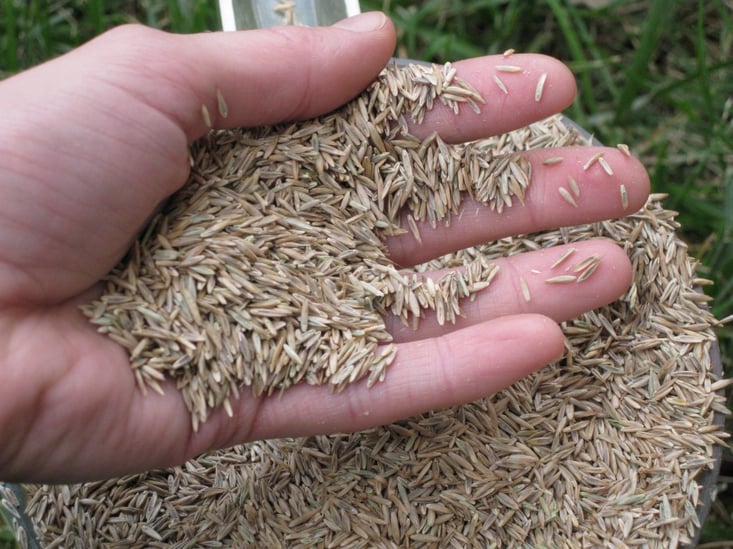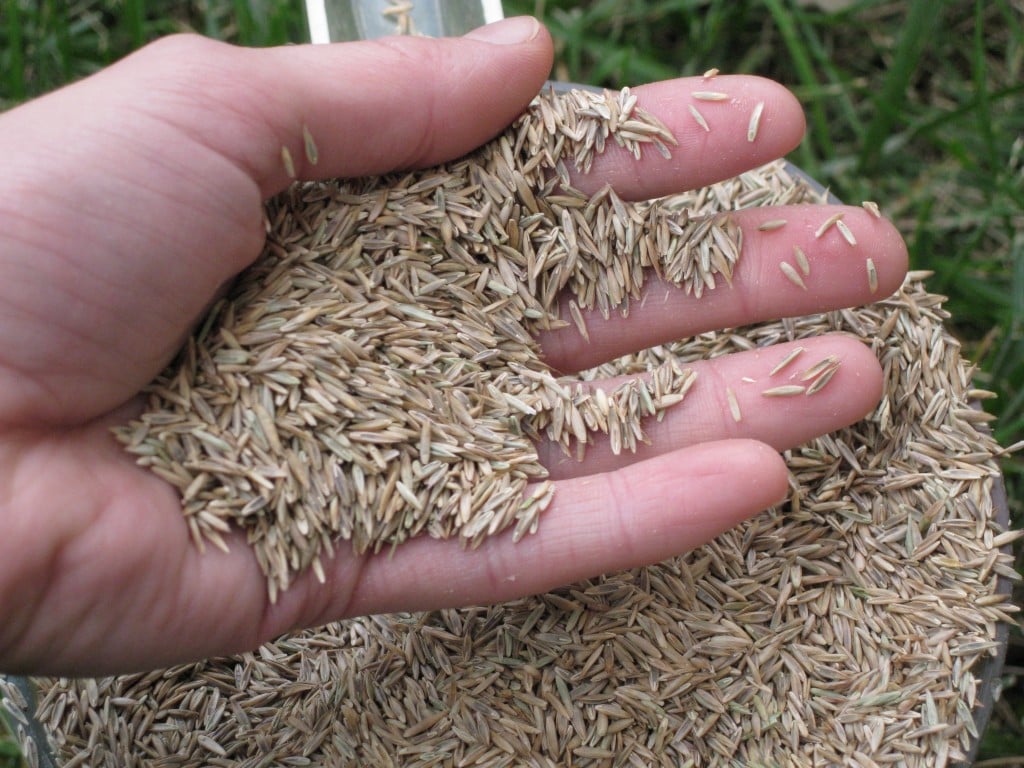
Patchy lawns are always problematic. Not only do they look bad, but they can also be a hotbed for disease, pests, and other common lawn care problems. If you have trouble with sparse grass coverage, or are considering grassing in an old garden area on your property, now's the time to act. Fall (beginning in mid-August and continuing until the end of September) is often the best time to sow new grass seed, as the seedbed is less likely to dry out at this time of year, and there is still plenty of time for your lawn to become established before winter. Not sure how to properly sow grass seed in your Burlington lawn? Don't worry! The following tips and tricks for sowing lawn seed are provided by the lawn care and residential sprinkler system experts at Nutri-Lawn and apply to bother overseeding applications and new lawn installations.
Four Things to Consider Before Sowing Grass Seed
The automatic sprinkler system installation experts at Nutri-Lawn always advise their lawn care clients of four important factors when sowing grass seed:
- Drainage
- Soil quality
- Seedbed preparation
- Choice of seed, fertility and moisture
Drainage and Soil Quality
Poor drainage can cause major problems for new grass seed, so always make sure that you properly level the area prior to spreading any seed. If possible, try and spread the soil so that it has a gentle slope away from any buildings. In order to avoid soil erosion, try and stay away from any steep slopes or terraces. The automatic sprinkler system installers at Nutri-Lawn also recommend investing in a hearty helping of topsoil to spread across the surface of the seedbed. For best results, try and spread a layer that is between 12 and 15 centimetres deep.
Prepping the Area for Planting
The seedbed will need to be well raked and levelled prior to spreading any seed. This will help remove any depressions that could hold surface water, drowning the fragile seeds. Once everything looks to be nice and flat, apply a good quality fertilizer, preferably one that is high in phosphorus. This will assist in the development of a healthy root system. Grab your rake one more time to ensure that the fertilizer is evenly distributed.
Choosing and Planting the Proper Grass Seed
It pays to select a good quality grass seed, so don't just grab any old bag off the hardware shelf! The residential sprinkler system experts at Nutri-Lawn recommend selecting a variety with at least two different kinds of seed. The type of seed to look for will depend on the sun and shade conditions of your yard (for more help with this selection, contact a lawn care technician at Nutri-Lawn). When spreading your seed, it's always best to use a mechanical spreader. This will help ensure that your coverage is even. Apply half of the seed travelling back and forth. Reposition yourself at a 90 degree angle prior to distributing the balance of the seed. Once the seeds have been sown, make sure that you keep the seedbed dark with moisture until the grass is growing out of the soil. This may require you to bump up the watering settings on your automatic sprinkler system.
Tending Your Grass Seed
The residential sprinkler system installers at Nutri-Lawn recommend avoiding cutting your new lawn until it has grown to a height of 6 to 8 centimetres. When it is time to cut it, don't go any lower than 4 centimetres. If you have been careful to put down good topsoil, weeds should not be a big problem in your lawn. Some careful hand weeding may be required for the first few weeks. After the new lawn has become established, you may wish to contact Nutri-Lawn for more information on environmentally-friendly weed treatments.
Sowing new grass seed can sometimes seem like an exact science. To ensure that your lawn makes the grade, contact a lawn care and automatic sprinkler system specialist at Nutri-Lawn for more tips and advice.






